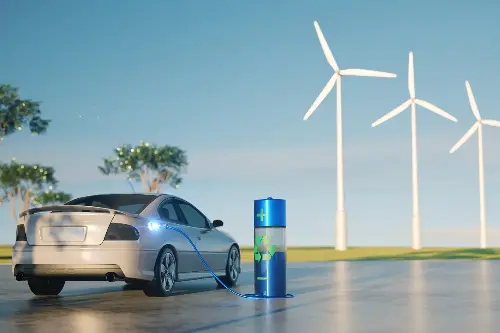In recent years, the conversation about reducing carbon footprints and fighting climate change has zoomed onto the roads with increasing urgency. As consumers become more environmentally conscious, the automotive industry's push towards sustainability has given rise to a critical question: are hybrid vehicles really greener than electric cars? Let's journey through the facts and figures to comprehend this automotive conundrum.

Unravelling the Emissions Equation
Transportation contributes a significant share of greenhouse gas emissions globally, making the shift to lower-emission vehicles a pivotal aspect of environmental strategies. Hybrids and electric vehicles (EVs) both present themselves as greener alternatives to their petrol and diesel counterparts, but their environmental impact varies based on several factors.
Hybrid vehicles combine a conventional internal combustion engine with an electric motor and battery. They reduce emissions by alternating between these power sources to optimise fuel efficiency. However, they still rely on fossil fuels to a degree. On the other hand, electric cars run solely on electricity stored in batteries, producing zero emissions at the point of use.
The Manufacturing Conundrum
The production of EVs, particularly the batteries, is more energy-intensive than that of traditional cars or hybrids. Mining the raw materials for batteries, such as lithium, cobalt, and nickel, has environmental implications. Nevertheless, once they hit the road, the emissions balance starts to tip in favour of electric vehicles.
The lifecycle of a car, from manufacture to disposal, needs to be considered when assessing its environmental credentials. Studies indicate that over their lifetime, EVs tend to have a lower carbon footprint than hybrids, even when accounting for the current electricity generation mix, which still relies significantly on fossil fuels in many countries.
Evolving Energy Grids
The environmental friendliness of electric vehicles is closely tied to the source of the electricity used to charge their batteries. As renewable energy sources like wind, solar, and hydroelectric become more prevalent, the carbon footprint of EVs could reduce further. The greening of the grid, therefore, has a direct impact on how green an electric vehicle truly is.
Hybrids don't benefit as much from this shift in energy production, as they will always have a fossil fuel component to their consumption. Even plug-in hybrids, which can be charged from the grid to allow for extended electric-only driving, have a finite all-electric range before they switch back to burning petrol.

Impact of Driving Habits
Consumer behaviour is also a critical factor in determining the relative greenness of hybrid and electric cars. For example, a plug-in hybrid might outperform an EV over short distances or in city traffic, where it can run mostly on its electric motor. However, over longer distances, the dependence on petrol may negate this advantage.
EV owners who predominantly charge their vehicles using renewable energy sources will have a smaller carbon footprint. Conversely, if an EV is primarily charged using electricity from coal-fired power stations, this advantage lessens.
Lifetime Performance and Recycling
The environmental impact of both hybrids and EVs extends beyond their operational lifetime. The ability to recycle materials, especially the batteries, is crucial in assessing the overall environmental impact. While battery recycling is improving, the industry is still grappling with how to effectively and sustainably reintegrate materials back into the manufacturing process.
Electric vehicles, which rely heavily on their batteries, face a significant challenge once those batteries reach the end of their useful life. Hybrid vehicles also contain batteries, albeit smaller ones, and face similar recycling challenges.

A Green Verdict in the Making
The debate between hybrid and electric vehicles is ongoing. A decisive green verdict depends on multiple, evolving factors—including advancements in technology, shifts towards renewable energy, improvements in battery efficiency and recycling, and changing consumer behaviour.
In the current climate, electric cars offer a future-facing solution with potential for a lower overall environmental impact, especially as global energy grids become cleaner. Nonetheless, hybrids serve as an important transitional technology, providing a greener alternative for consumers not yet ready to go fully electric.
In conclusion, while both vehicle types have their advantages and drawbacks, the scales are tipping in favour of electric vehicles. As we advance towards a cleaner future, we can expect EVs to play a pivotal role in driving down automotive emissions. However, it is clear that ongoing improvements in technology and infrastructure, along with responsible consumer choices, will be key to realising the full environmental potentials of these vehicles. Whether hybrid or electric, the move away from fossil fuel dependency signals a greener horizon for our roadways.
